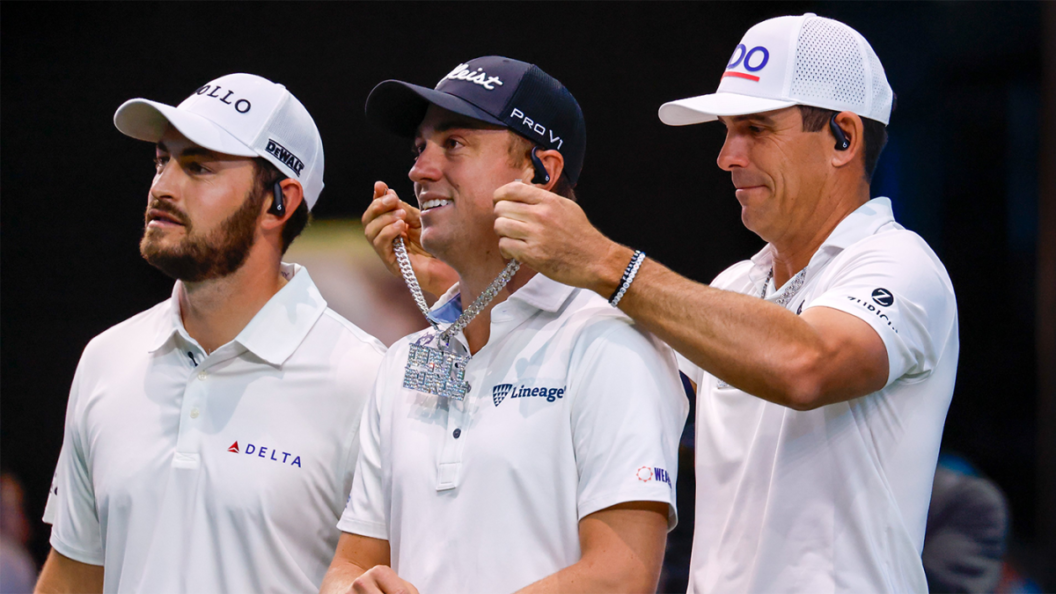TGL Match Highlights Competitiveness in Simulator Golf League
In the latest face-off between golf powerhouses Tiger Woods and Rory McIlroy’s simulator league, TGL, the Atlanta Drive Golf Club claimed a decisive victory over the New York Golf Club with a score of 4-0. This third match of the league, which has generated considerable attention for its cutting-edge technology and format, marked the first shutout in TGL history, reflecting a notable shift towards competitive gameplay.
Key Players and Match Progression
Representing Atlanta were stars Justin Thomas, Patrick Cantlay, and Billy Horschel, who quickly took the lead against their New York counterparts, consisting of Rickie Fowler, Matt Fitzpatrick, and Cameron Young. The initial sessions saw Atlanta earn points early, with only one additional point claimed across several subsequent holes, extending their lead ahead of the singles format. The Atlanta team maintained their momentum, and thanks to strong performances from Thomas and Cantlay, they solidified their advantage as the match progressed, officially confirming victory when the teams tied further holes in singles play. This win puts New York at the bottom of the standings with an 0-2 record.
Areas for Improvement in Future Matches
As TGL continues to evolve, commentators have identified several areas that could enhance the viewing experience:
-
More Aggressive Gameplay: The absence of the "hammer" — a strategic advantage in the league — detracted from the excitement of the match. Enthusiasts suggest that utilizing this feature more frequently could engage fans and increase competition, adding stakes that align more closely with traditional golf tournaments.
-
Firmer Course Conditions: The current simulator conditions have been criticized for being too "sticky" and slow, limiting players’ strategic decisions. A faster and firmer course setting could create a more dynamic environment where players have to navigate challenges similar to those found in real settings, enhancing the thrill for spectators.
- Streamlined Broadcast Communication: Commentary during the match, while lively, often included tangential reports that some viewers felt were unnecessary. Critics argue that it would be more beneficial to focus on player interactions discussing their shots and strategies, fostering a richer viewer experience.
Conclusion: The Future of TGL and Simulator Golf
The TGL’s third match demonstrates both the potential and the challenges facing this innovative league. With a notable performance by the Atlanta team, which comprised seasoned professionals able to adapt well to the simulator format, it’s clear that the competition is heating up. However, as fans express desires for more engaging gameplay and streamlined viewing experiences, TGL organizers may need to address these concerns to maintain and grow their audience.
By enhancing the competitive elements of simulator golf, TGL has the opportunity to carve out a unique niche in the sports landscape, appealing to both traditional golf fans and new audiences drawn to the intersection of technology and athleticism. The ongoing evolution of this league could reshuffle the boundaries of how golf is played and viewed, potentially redefining the sport for a new generation of fans.









